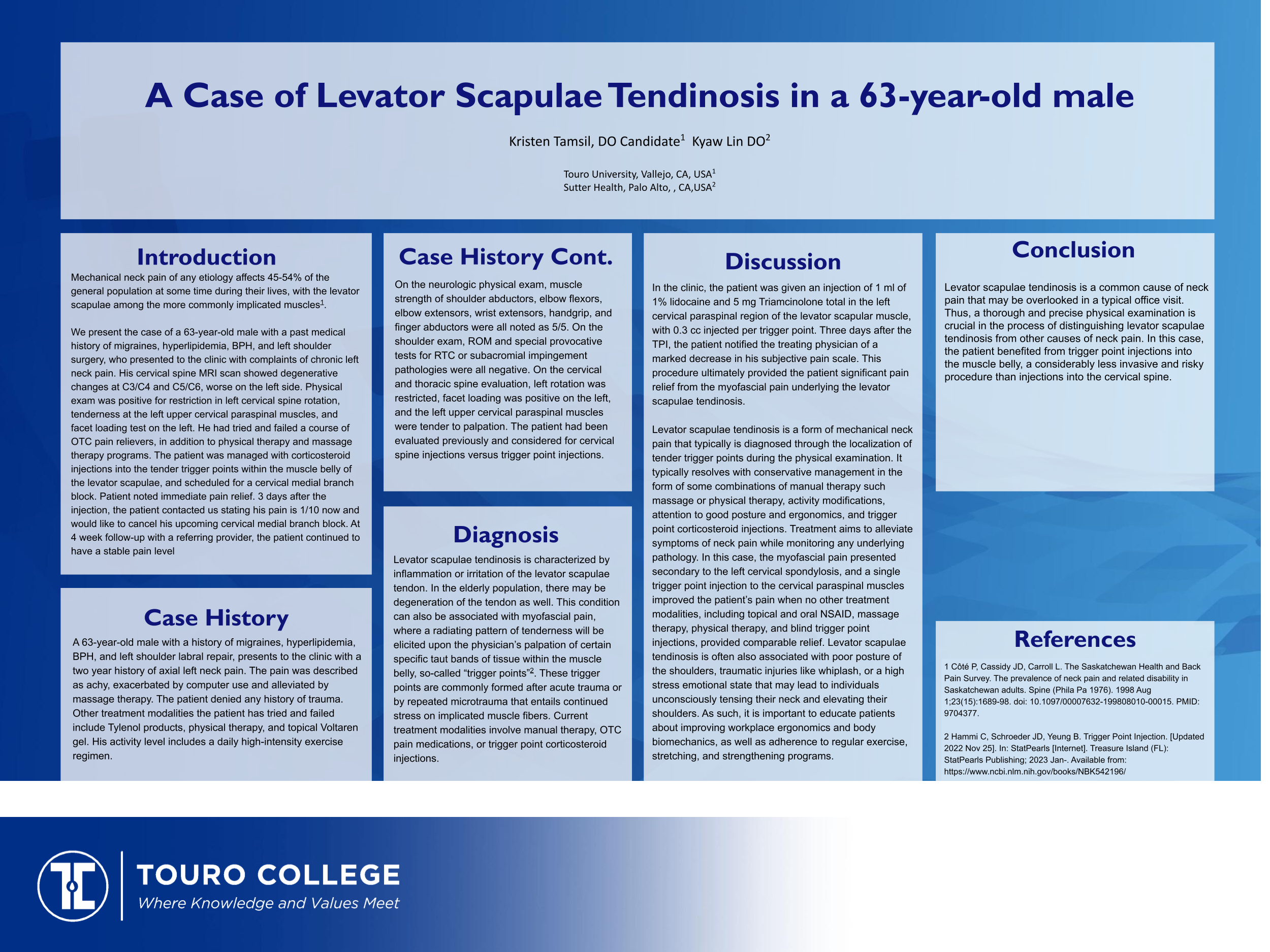
Summary
Mechanical neck pain of any etiology affects 45-54% of the general population at some time during their lives, with the levator scapulae among the more commonly implicated muscles1. We present the case of a 63-year-old male with a past medical history of migraines, hyperlipidemia, BPH, and left shoulder surgery, who presented to the clinic with complaints of chronic left neck pain. His cervical spine MRI scan showed degenerative changes at C3/C4 and C5/C6, worse on the left side. Physical exam was positive for restriction in left cervical spine rotation, tenderness at the left upper cervical paraspinal muscles, and facet loading test on the left. He had tried and failed a course of OTC pain relievers, in addition to physical therapy and massage therapy programs. The patient was managed with corticosteroid injections into the tender trigger points within the muscle belly of the levator scapulae, and scheduled for a cervical medial branch block. Patient noted immediate pain relief. 3 days after the injection, the patient contacted us stating his pain is 1/10 now and would like to cancel his upcoming cervical medial branch block. At 4 week follow-up with a referring provider, the patient continued to have a stable pain level.
This case highlights the importance of considering levator scapulae tendinosis as a differential diagnosis in adults presenting with unilateral neck pain. The trigger point injections (TPI) also avoided the immediate need for a cervical medial branch and radiofrequency ablation, thus providing specific and complete pain relief while identifying myofascial pain syndrome as a central cause of the patient’s complaints.